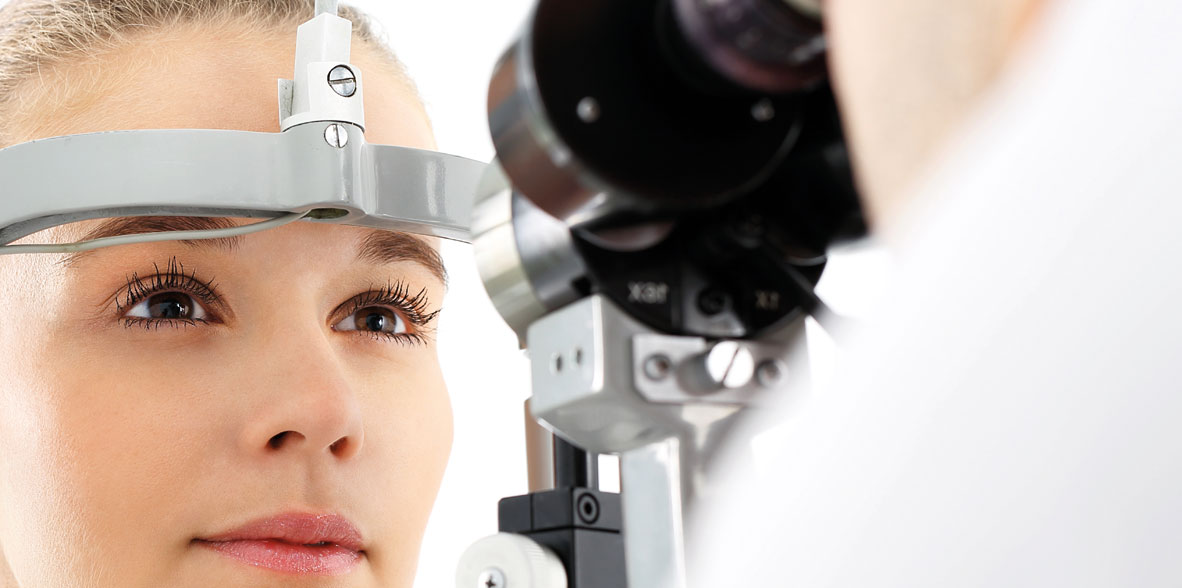

 Ophthalmology
Ophthalmology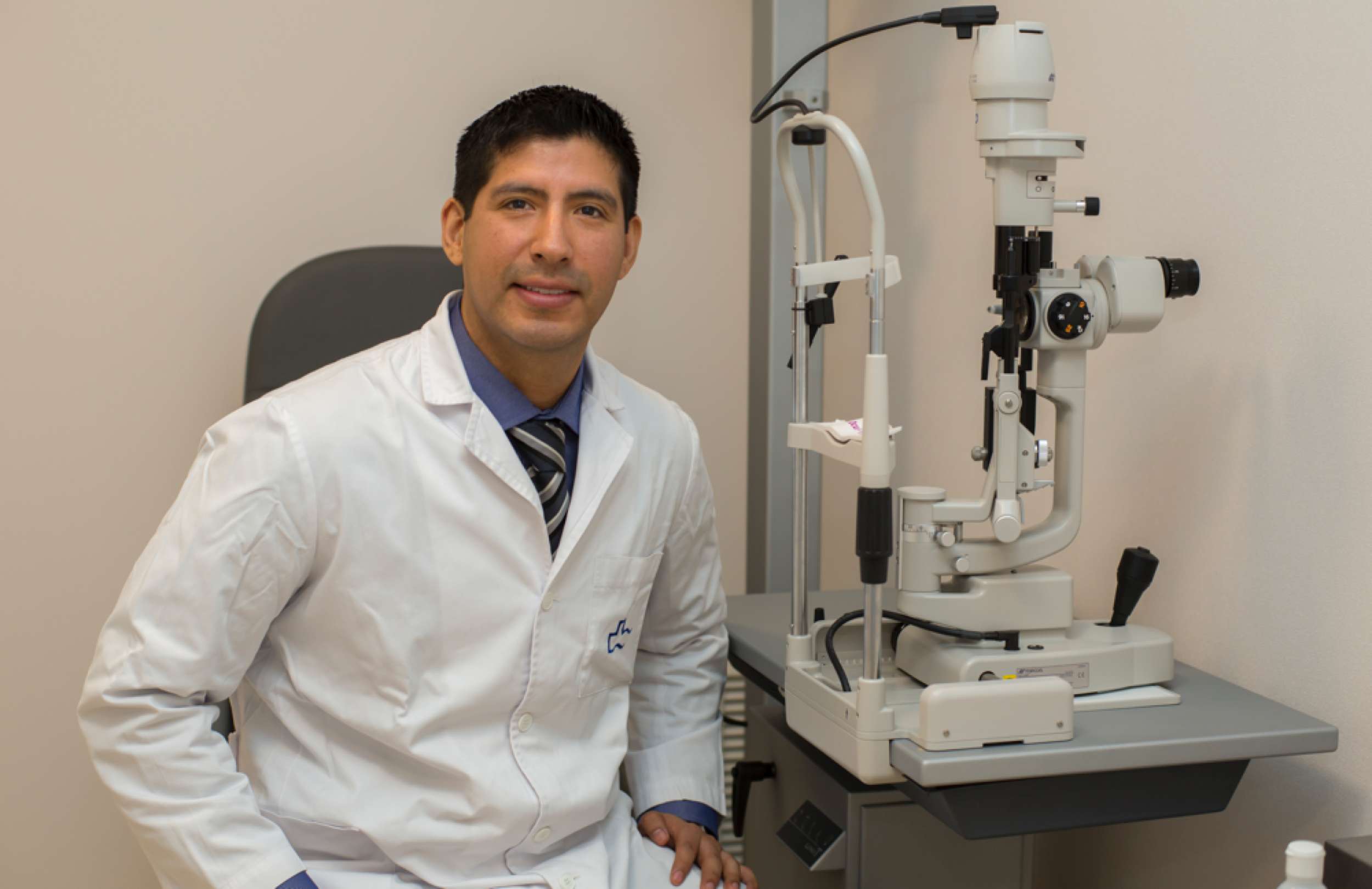 OftalmologíaCentro Médico Teknon
OftalmologíaCentro Médico Teknon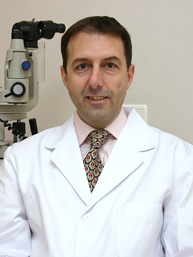 OphthalmologyCentro Médico Teknon
OphthalmologyCentro Médico Teknon OphthalmologyCentro Médico Teknon
OphthalmologyCentro Médico Teknon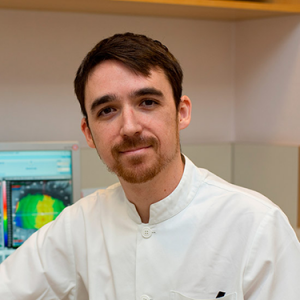 OftalmologíaCentro Médico Teknon
OftalmologíaCentro Médico Teknon OftalmologíaCentro Médico Teknon
OftalmologíaCentro Médico Teknon
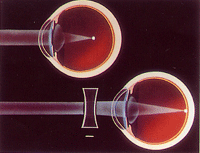 Myopia (Short-sightedness)
Myopia (Short-sightedness)
Myopia tends to be a hereditary sight condition in which a person can make out nearby objects clearly whereas far away ones appear blurred to them. The habitual explanation for this is that their eye is longer than that of an average person or that the curvature in the cornea is too great. The rays of light therefore converge in front of the retina, creating blurred images.
In myopia, the rays of light converge in front of the retina and not over it
Hyperopia (Long-sightedness)
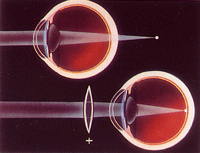 With this defect, the rays of light converge behind the retina, since the person's eyes are either shorter than average or their corneas, unlike those of a short-sighted person, are too flat. The result is that objects at close range appear blurred.
With this defect, the rays of light converge behind the retina, since the person's eyes are either shorter than average or their corneas, unlike those of a short-sighted person, are too flat. The result is that objects at close range appear blurred.
In hyperopia the rays of light converge behind the retina
Astigmatism
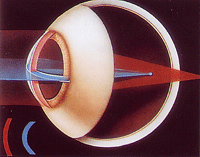 The cornea of a person with astigmatism has a greater curve at one axis than at the other.
The cornea of a person with astigmatism has a greater curve at one axis than at the other.
One way to understand it is to say the cornea is shaped more like a rugby ball than a football.
Vision from whatever distance is blurred, distorting the image as do curved, convex and concave mirrors which create the illusion you are taller, broader or leaner than you are. Astigmatism can manifest itself of its own will or through short or long- sightedness.
In the case of astigmatism, inconsistencies in the curve of the cornea cause images to appear distorted
- What is refractive surgery?
Refractive surgery is surgery which has been developed to treat refractory defects like myopia, hyperopia and astigmatism and improve sight without the aid of glasses or contact lenses.
- What is Lasik vision correction?
LASIK vision correction is the most renowned form of refractive surgery, performed by lifting a flat of corneal tissue 1/3 the thickness of the cornea with a microkeratome. A laser is then applied to the stroma thus re-shaping the cornea.


The opening of the cornea, lifting the outer flap of tissue with a microscopic blade.

Employment of the laser to re-shape the cornea alongside the final result. - What does Zyoptix involve?
The Zyoptix approach is a personalised form of excimer laser treatment in which the laser software adjusts itself to match the information provided by two pieces of apparatus: the first is the aberrometer, designed to identify aberrations in the optical system, phenomena which tarnish the quality of vision for some people; and the second is an elevation topographer, which collects information regarding the front and rear faces of the cornea, indicating any features which may render laser treatment for a refractory problem inappropriate.
- What is the main advantage of Zyoptix?
Personalised treatment allows us to provide the most suitable medical assistance for each patient, lowering risks and enhancing quality.
- Is Zyoptix a substitute for Lasik technique?
No, Zyoptix is a complementary treatment for those patients, who on the grounds of an overly thin cornea or extreme short-sightedness, were not eligible for the Lasik option. Thanks to the Zyoptix method, the excimer laser can be employed on a broader spectrum of people. But it will, in any case, always be the ophthalmologist who decides whether Zyoptix treatment is appropriate or not.
- What is the technique Tissue Saving?
- Tissue Saving is a customized technique that applies laser to the stroma, just like the Excimer Laser and Zyoptix, to re-shape the tissue and reduce the number of diopters.
- With Tissue Saving it is possible to operate on less thickness of the cornea in order to get the same correction of diopters than with Lasik, and the problem is solved quicker.
- What is the main advantage of Tissue Saving?
Given that this kind of laser acts quicker and it's applied in less tissue, we are able to respect more the corneal integrity. Therefore, surgery is allowed to a wider range of patients.
- Is Tissue Saving a substitute for the Lasik technique?
No, Tissue Saving is complementary treatment for those patients, who on the grounds of an overly thin cornea or extreme short-sightedness were not eligible for the Lasik option. Thanks to this method, the excimer laser can be employed on a broader spectrum of people. But it will, in any case, always be the ophthalmologist who decides whether Tissue Saving treatment is appropriate or not.
- How many diopters can be treated with the laser?
- Myopia: Up to 10 diopters (Up to 15 with Zyoptix).
- Hyperopia: Up to 5 diopters.
- Astigmatism: Up to 6 diopters.
- Is the operation painful?
No, treatment is not painful. It is conducted with the patient placed under a topical anaesthetic (via administration of anaesthetic eye drops). The only thing felt is a burning sensation in the hours following the operation.



































